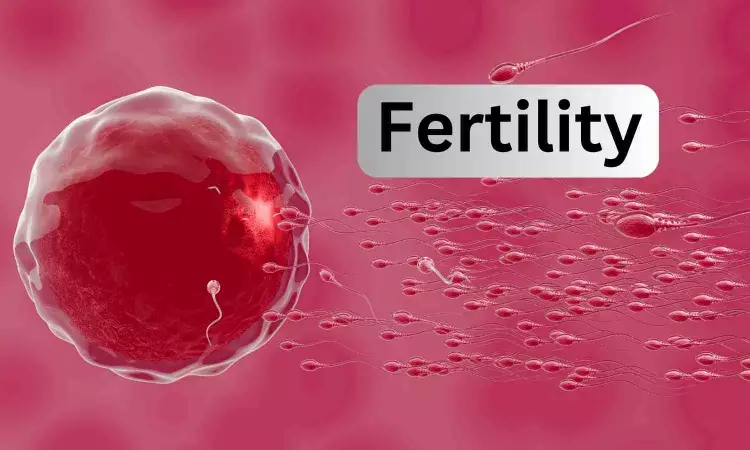- Home
- Medical news & Guidelines
- Anesthesiology
- Cardiology and CTVS
- Critical Care
- Dentistry
- Dermatology
- Diabetes and Endocrinology
- ENT
- Gastroenterology
- Medicine
- Nephrology
- Neurology
- Obstretics-Gynaecology
- Oncology
- Ophthalmology
- Orthopaedics
- Pediatrics-Neonatology
- Psychiatry
- Pulmonology
- Radiology
- Surgery
- Urology
- Laboratory Medicine
- Diet
- Nursing
- Paramedical
- Physiotherapy
- Health news
- Fact Check
- Bone Health Fact Check
- Brain Health Fact Check
- Cancer Related Fact Check
- Child Care Fact Check
- Dental and oral health fact check
- Diabetes and metabolic health fact check
- Diet and Nutrition Fact Check
- Eye and ENT Care Fact Check
- Fitness fact check
- Gut health fact check
- Heart health fact check
- Kidney health fact check
- Medical education fact check
- Men's health fact check
- Respiratory fact check
- Skin and hair care fact check
- Vaccine and Immunization fact check
- Women's health fact check
- AYUSH
- State News
- Andaman and Nicobar Islands
- Andhra Pradesh
- Arunachal Pradesh
- Assam
- Bihar
- Chandigarh
- Chattisgarh
- Dadra and Nagar Haveli
- Daman and Diu
- Delhi
- Goa
- Gujarat
- Haryana
- Himachal Pradesh
- Jammu & Kashmir
- Jharkhand
- Karnataka
- Kerala
- Ladakh
- Lakshadweep
- Madhya Pradesh
- Maharashtra
- Manipur
- Meghalaya
- Mizoram
- Nagaland
- Odisha
- Puducherry
- Punjab
- Rajasthan
- Sikkim
- Tamil Nadu
- Telangana
- Tripura
- Uttar Pradesh
- Uttrakhand
- West Bengal
- Medical Education
- Industry
Obstetric outcomes similar for surrogacy and non-surrogacy using fertility treatments: JAMA

Obstetric outcomes similar for surrogacy and non-surrogacy using fertility treatments suggest a new study published in the JAMA.
Advancements in assisted reproductive technology (ART) have led to an increase in gestational carrier (GC) pregnancies. However, the perinatal outcomes of GC pregnancies remain understudied, necessitating a deeper understanding of their associated risks.A study assessed maternal characteristics and obstetric outcomes associated with GC pregnancies.
A comprehensive systematic search of publications published before October 31, 2023, using PubMed, Web of Science, Scopus, and Cochrane Library databases was conducted. Two authors selected studies examining obstetric characteristics and outcomes in GC pregnancies with 24 or more weeks’ gestation. Studies with insufficient outcome information, unavailable data on gestational surrogacies, and non-English language studies were excluded. Adhering to Preferred Reporting Items for Systematic Reviews and Meta-Analysis guidelines, 2 investigators extracted and synthesized both quantitative and qualitative data.
Both fixed-effect and random-effect analysis were used to pool data. The primary outcomes were obstetric characteristics and outcomes, including hypertensive disorders, preterm birth, and low birth weight. Secondary outcomes included severe maternal morbidity and mortality associated with GC pregnancies. Results: Six studies from 2011 to 2023 involving 28 300 GC pregnancies and 1 270 662 non-GC pregnancies were included. GCs accounted for 2.5% of in vitro fertilization cycles (59 502 of 2 374 154 cycles) and 3.8% of ART pregnancies (26 759 of 701 047 ART pregnancies). GC pregnancies were more likely to be conceived by frozen embryo transfer compared with non-GC ART pregnancies (odds ratio [OR], 2.84; 95% CI, 1.56-5.15), and rates of single embryo transfer were similar between the 2 groups (OR, 1.18; 95% CI, 0.94-1.48).
GCs were rarely nulliparous (6 of 361 patients [1.7%]) and were more likely to have multifetal pregnancies compared with non-GC ART patients (OR, 1.18; 95% CI, 1.02-1.35). Comparator studies revealed lower odds of cesarean delivery (adjusted OR [aOR], 0.42; 95% CI, 0.27-0.65) and comparable rates of hypertensive disorders (aOR, 0.86; 95% CI, 0.45-1.64), preterm birth (aOR, 0.82; 95% CI, 0.68-1.00), and low birth weight (aOR, 0.79; 95% CI, 0.50-1.26) in GC pregnancies vs non-GC ART pregnancies. Comparatively, GC pregnancies had higher odds of hypertensive disorders (aOR, 1.44; 95% CI, 1.13-1.84) vs general (non-GC ART and non-ART) pregnancies with comparable cesarean delivery risk (aOR, 1.06; 95% CI, 0.90-1.25).
Preterm birth and low birth weight data lacked a comparative group using multivariate analysis. Severe maternal morbidity and maternal mortality were rare among GCs. In this systematic review and meta-analysis, although GC pregnancies had slightly improved outcomes compared with non-GC ART pregnancies, they posed higher risks than general pregnancies. Contributing factors may include ART procedures and increased rates of multiple gestations which influence adverse perinatal outcomes in GC pregnancies.
Reference:
Matsuzaki S, Masjedi AD, Matsuzaki S, et al. Obstetric Characteristics and Outcomes of Gestational Carrier Pregnancies: A Systematic Review and Meta-Analysis. JAMA Netw Open. 2024;7(7):e2422634. doi:10.1001/jamanetworkopen.2024.22634
Dr. Shravani Dali has completed her BDS from Pravara institute of medical sciences, loni. Following which she extensively worked in the healthcare sector for 2+ years. She has been actively involved in writing blogs in field of health and wellness. Currently she is pursuing her Masters of public health-health administration from Tata institute of social sciences. She can be contacted at editorial@medicaldialogues.in.
Dr Kamal Kant Kohli-MBBS, DTCD- a chest specialist with more than 30 years of practice and a flair for writing clinical articles, Dr Kamal Kant Kohli joined Medical Dialogues as a Chief Editor of Medical News. Besides writing articles, as an editor, he proofreads and verifies all the medical content published on Medical Dialogues including those coming from journals, studies,medical conferences,guidelines etc. Email: drkohli@medicaldialogues.in. Contact no. 011-43720751


